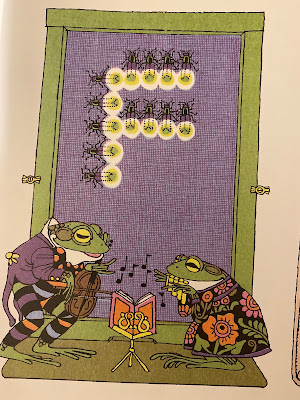The story of Mary Jemison is true and fascinating. Lois Lenski delved into the research, studying Seneca objects in museums, working with the native artist Gaoyaih, and even visiting some of Jemison's descendants. The result is an enjoyable read that feels authentic and full of fascinating information about how the Native Americans lived in the late 18th century.
This was driven home last Spring when my family visited the Pocono Indian Museum (a small but fascinating museum in Stroudsburgh, PA). Not only were there artifacts and examples of tools and implements on display, but also life-size diaoramas depicting the very things I had been reading about in Lenski's story!
What makes Indian Captive so good is the complex feelings and characterization that Lenski provides, never dumbed down for children, but still appropriate for young readers. Mary Jemison spends much of the story wanting to escape her Indian captors who have killed her family. This is never glossed over, but the Indians are not painted as the bad guys. Through the eyes of the child Mary, we see customs and a way of life that is initially confusing and off-putting, but gradually begins to be understandable. Like many other young Indian captives, the real Mary Jemison acclimated and spent the rest of her life with her Indian family.
Perhaps the Englishman was right- she ought to hate the Indians for the crime which they had committed against her- but in her heart there was no feeling of revenge, no hate. It was only war that she hated- war which set nation agains nation; the French against the English, and the poor Indians between them both. It was a war which had deprived her of her family. As she had suffered once in losing her family, so did the Indians suffer like losses, over and over. Her loss was no greater than theirs.
No, by coming to the Indians, she was the richer. She had learned much that she might not otherwise have learned. No matter what lay in store for her, she was willing now to go out to meet it. All that she had suffered in coming to the Indians would make the rest of her life easy by comparison. No pain, no sorrow which the future held, would be too great to bear. She was sister to the animals, to all growing things; she was sister to the Indians, because she had suffered pain with them. Because her pain had been so great, she would be sister to the suffering as long as she lived. Washed clean by pain, she faced the future unafraid.




























































